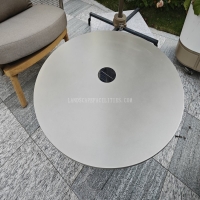Welcome to the website for landscape facilities products and knowledge.
How does the trash can’s design handle the weight of compacted waste without deformation?
Modern trash cans are engineered to withstand the pressure of compacted waste without buckling or warping. The secret lies in a combination of robust materials, reinforced structural design, and intelligent weight distribution.
High-quality trash cans typically use thick, impact-resistant plastics or powder-coated steel that maintains rigidity under pressure. Many feature reinforced bases and vertical ribs along the sides that create structural integrity, distributing compression forces evenly across the entire unit.
Advanced designs incorporate tapered walls that naturally guide waste downward while strengthening the container's resistance to bulging. Some premium models include internal support columns or honeycomb patterns molded into the sidewalls for added stability.
The bottom geometry plays a crucial role too. Trash cans designed for compaction often have weighted or widened bases that lower the center of gravity, preventing tipping while allowing vertical forces to dissipate through the foundation.
Commercial-grade models may include metal reinforcement rings at stress points where the can experiences the most compression. This strategic placement of durable materials in high-impact areas ensures longevity even with regular compacting.
By combining these design elements, manufacturers create waste containers that can handle significant compacted weight while maintaining their shape and functionality over years of use.
Related search:

Recommendation
Outdoor stainless steel table with solar-powered ambient lighting feature - excellent design.